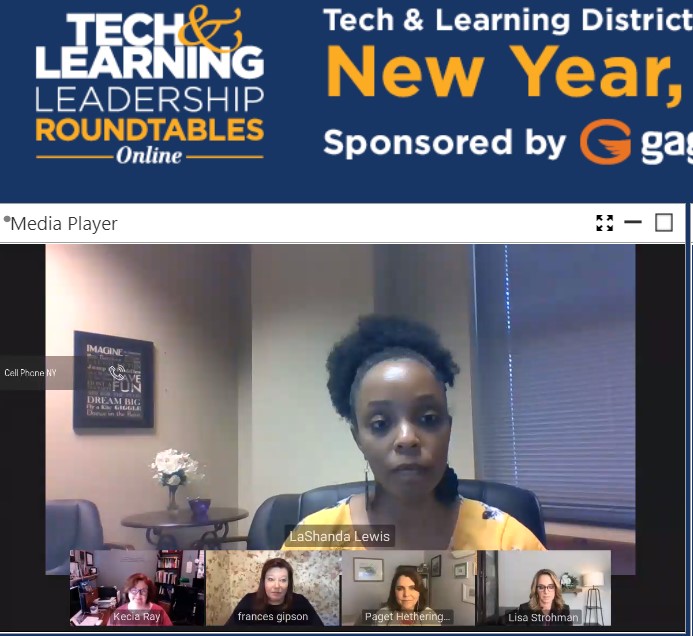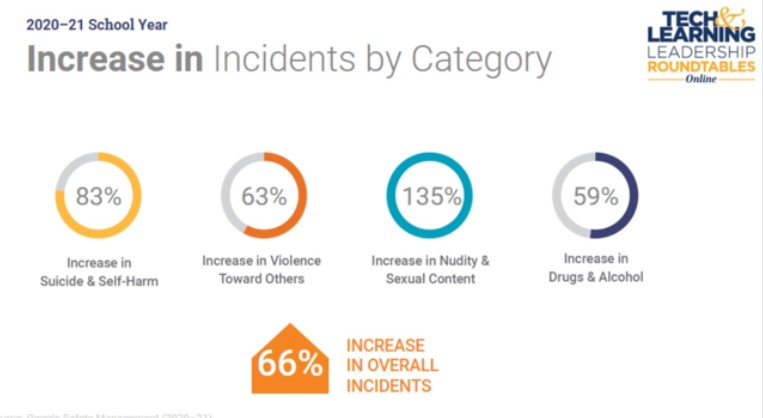Social and Emotional Learning, Trauma, and This School Year
How can educators use social and emotional learning to address students’ trauma, help them cope with recent changes, and be successful in the 2020-21 school year and beyond

Students have been through a lot in 2020. School buildings closed their doors, a pandemic threatened their safety and kept them from friends and loved ones, and civil unrest resulted in social turmoil across the country. It truly is a year like no other.
These drastic changes to students’ routines have undoubtedly brought about a great deal of trauma. How can educators use social-emotional learning (SEL) to address students’ trauma, help them cope with these changes, and be successful in the 2020-21 school year and beyond?
During a recent Tech & Learning Lunch ‘n Learn roundtable, Dr. Kecia Ray talked with educators and mental health professionals who shared specific ways to address student trauma and social and emotional learning.
Watch the on-demand version here
Key Takeaways
A nation at hope. Quoting Margaret J. Wheatley, Dr. Frances Gipson, formerly Los Angeles Unified School District’s longest-serving Chief Academic Officer and currently the director of Claremont Graduate University's Urban Leadership program, told attendees, “It is possible to prepare for the future without knowing what it will be. The primary way to prepare for the unknown is to attend to the quality of our relationships, to how well we know and trust one another.”
Gipson then referred to Transition From A Nation At Risk to A Nation At Hope, a report from the Aspen Institute National Commission on Social, Emotional, and Academic Development.
The report offers five key recommendations for educators in regard to SEL.
Tools and ideas to transform education. Sign up below.
- Set a clear vision that broadens and defines students success to prioritize the whole child
- We want to transfer learning settings and ensure that any setting is safe and supportive for all young people
- Change instruction to teach social, emotional, and cognitive skills, ideally embedded in existing lessons
- We need to invest in adult expertise in child care development
- Align resources in the community to address the whole child
“Our educators are sending clear and urgent messages that learning won’t be prioritized until SEL is everywhere,” said Gipson. “We need to have a strategic plan for SEL in our schools. We need to create a space for SEL in our schools.”
Tool time. “Teachers need a toolbox, but I’ll go so far to say that we need a toolbelt, and SEL is on that toolbelt, that first tier of support,” said Gipson. Education leaders have to make sure that everyone has access to SEL in their toolbelt, which means PD and other supports. “SEL is not a ‘nice-to-have,’ but a ‘must-have’ in this environment,” she said.
Saving lives. “Our vision is that all schools are safe and that students are getting the help and support they need,” said Paget Hetherington, Vice President of Marketing at Gaggle. “We want to make sure that every student is safe.”
Hetherington talked about how data collected during remote learning has shown a 66% increase in overall incidents.

Hetherington also discussed that by being able to monitor these incidents through a platform such as Gaggle, resources and personnel can be properly allocated to save student lives.
SEL-ling SEL. “Connection is vital during this time,” said Dr. LaShanda Lewis, Counseling Services Coordinator at Round Rock I.S.D. in Texas. “As a district, we need to make sure that we’re communicating with students more than ever. Going into this year, our traditional ways of connecting with students were not going to be the same. So we looked to tools that students would engage with.”
Lewis discussed how her district is using digital tools to launch SEL-focused programs, such as creating lunch bunches and “Talk about it” Taco Tuesdays, which allow students to connect digitally with one another. They have also adapted board games such as Pictionary to help students connect with one another, have fun, stay connected, and reduce stress, all of which is key for SEL. For example, one counselor plays a virtual version of the old game Don’t Break the Ice by numbering blocks that correspond to SEL-related questions to gain insight to where students are in their personal lives.
The district also encourages virtual mentoring programs by partnering students virtually to engage in SEL-building activities and has launched mental health centers on campus so that students can stay in school and get support. These centers have been adapted for virtual settings so students can meet with their therapists during the school day.
Students have also been using tools such as Gaggle to reach out for support needed by placing statements in the platform to get help. “Please don’t hesitate to look into what students are really saying,” Lewis said. “Research what’s going on there because it can be the difference in saving a student’s life.”
Come on, get ’appy. When we’re in a crisis situation, technology can be something to move us forward and take us into new places, said Dr. Lisa Strohman, an attorney, clinical psychologist, and author who has established the Digital Citizen Academy, a nonprofit program offered to schools with an in-home plan that educates, empowers, and inspires balance and prosocial use of technology. “We’re trying to teach students through SEL how to handle certain situations, but it’s challenging when they’re not right in front of us,” said Strohman. “We really have to rely on technology to let us know about their mental health. A lot of kids are going untreated.”
Students are increasingly using apps to connect with family and friends now more than ever, Strohman said, and encouraging the creative use of these tools is one way to promote positive mental health. For example, Strohman discussed how kids are really drawn into music, and using music apps can help students become mentally active, be creative, and build their skill sets in positive ways. Learning a foreign language can also benefit the brain and stimulate other emotions. Meditative and mindfulness apps also can provide great SEL-friendly skill-building opportunities and can contribute to building a peaceful connection with technology.
“Paying attention to what they’re using and how they connect, is critical,” Strohman said, underscoring the need to understand the difference between active and passive use is critical. “If you can use tech in positive ways to build that engagement and manage that stress and anxiety in kids, that can be very beneficial.”
Lunch 'n Learn with Tech & Learning
We hope you can join us for this weekly District Leadership Lunch ‘n Learn Roundtable series, hosted by Dr. Kecia Ray, every Wednesday. In this weekly series, districts from across the U.S. share their strategic plans, the challenges they are facing, and the creative solutions they are using to support students and teachers. Register for our upcoming event here.
More from T&L: Lunch 'n Learn roundtable recaps
Ray Bendici is the Managing Editor of Tech & Learning and Tech & Learning University. He is an award-winning journalist/editor, with more than 20 years of experience, including a specific focus on education.
